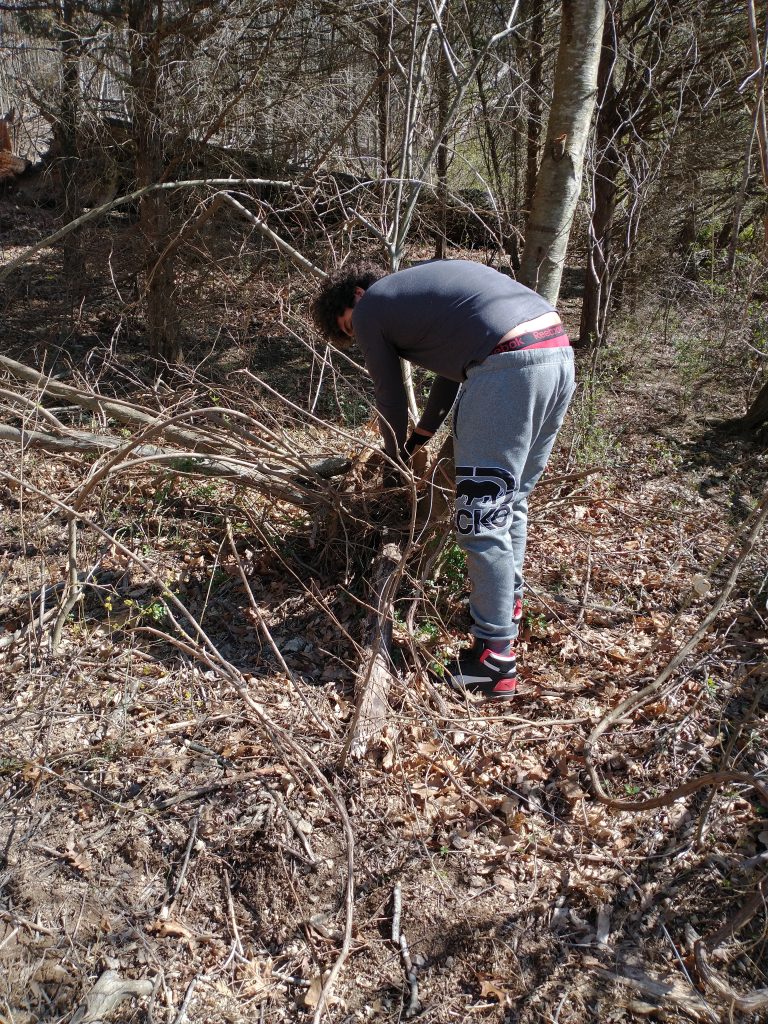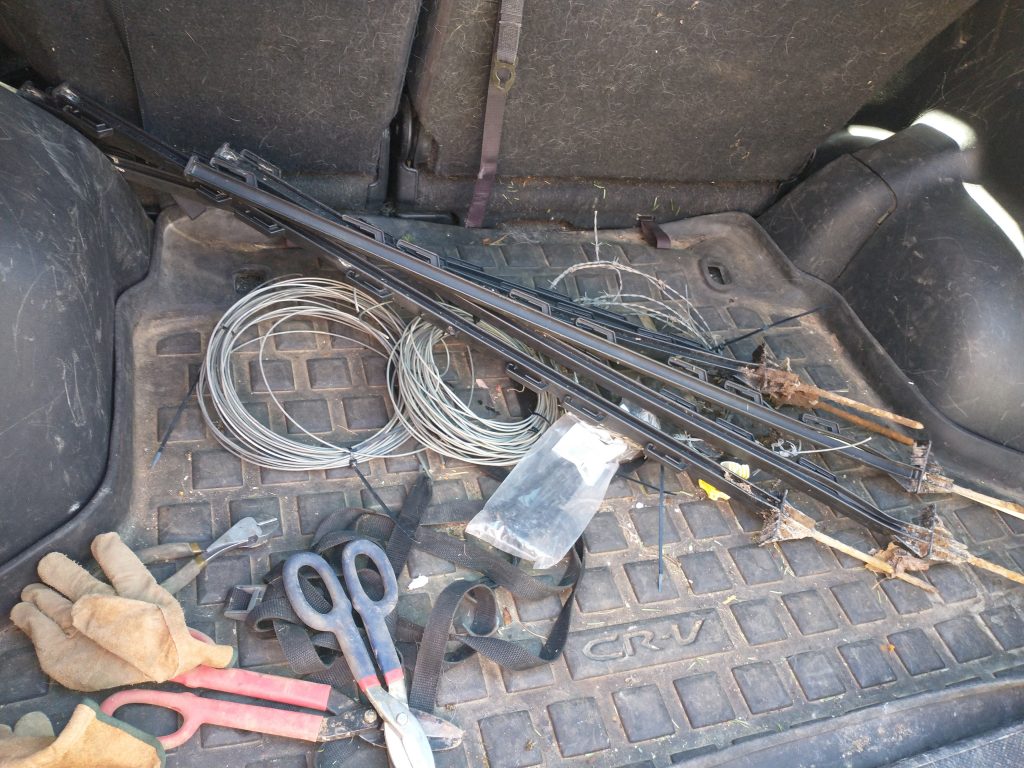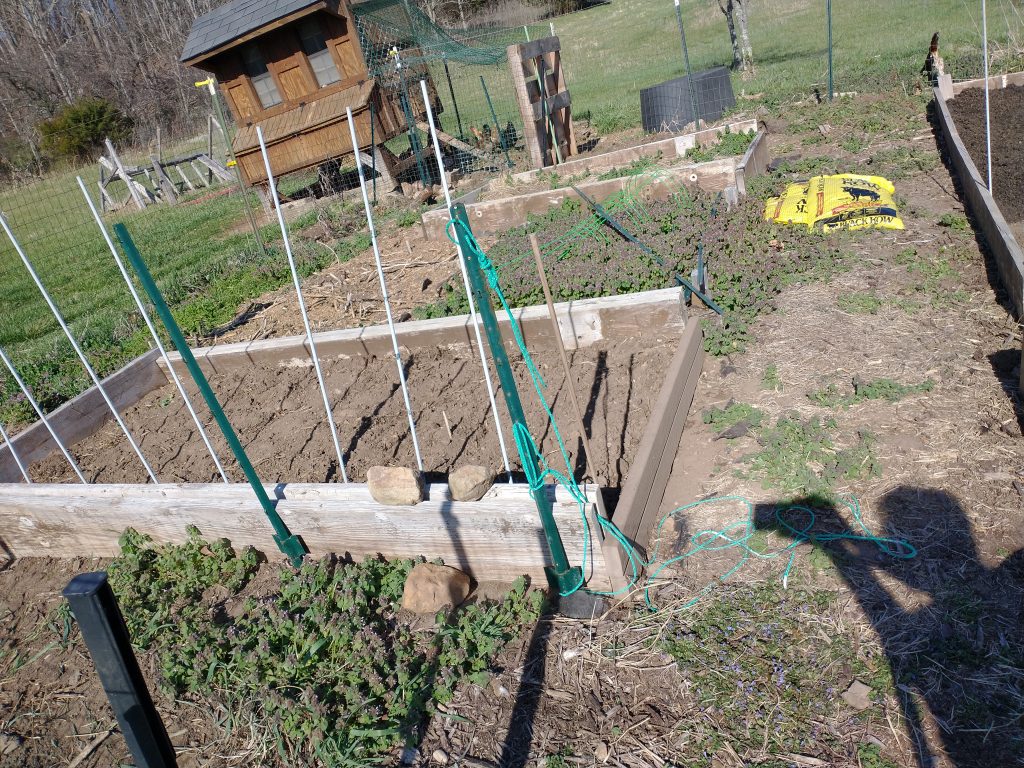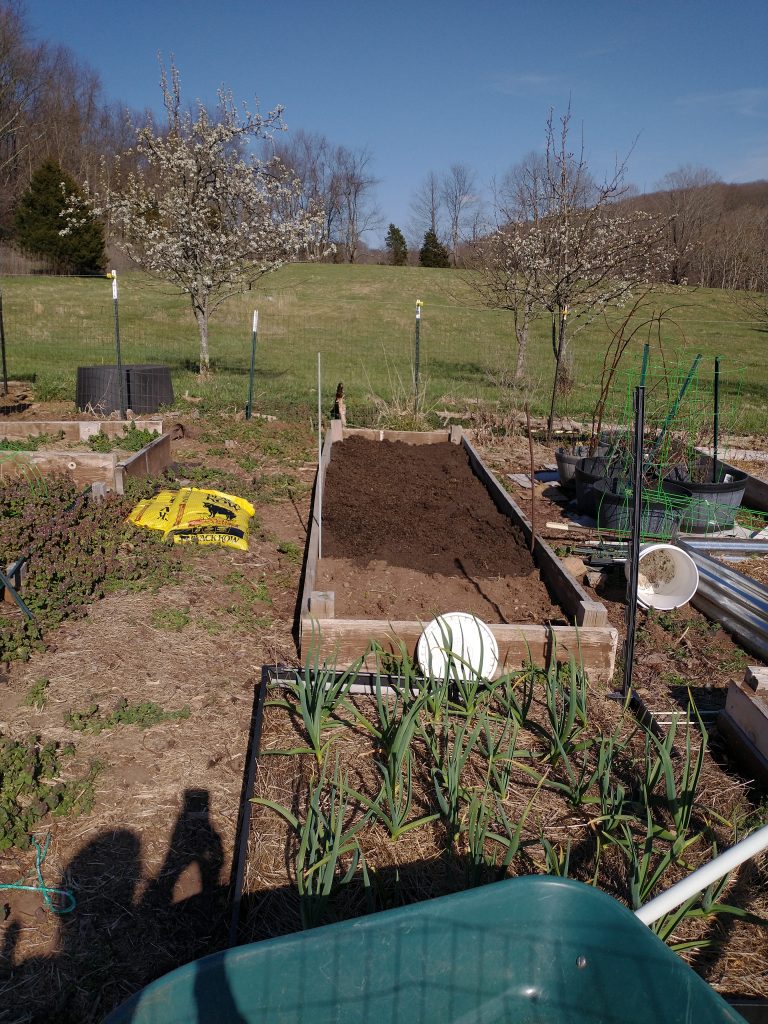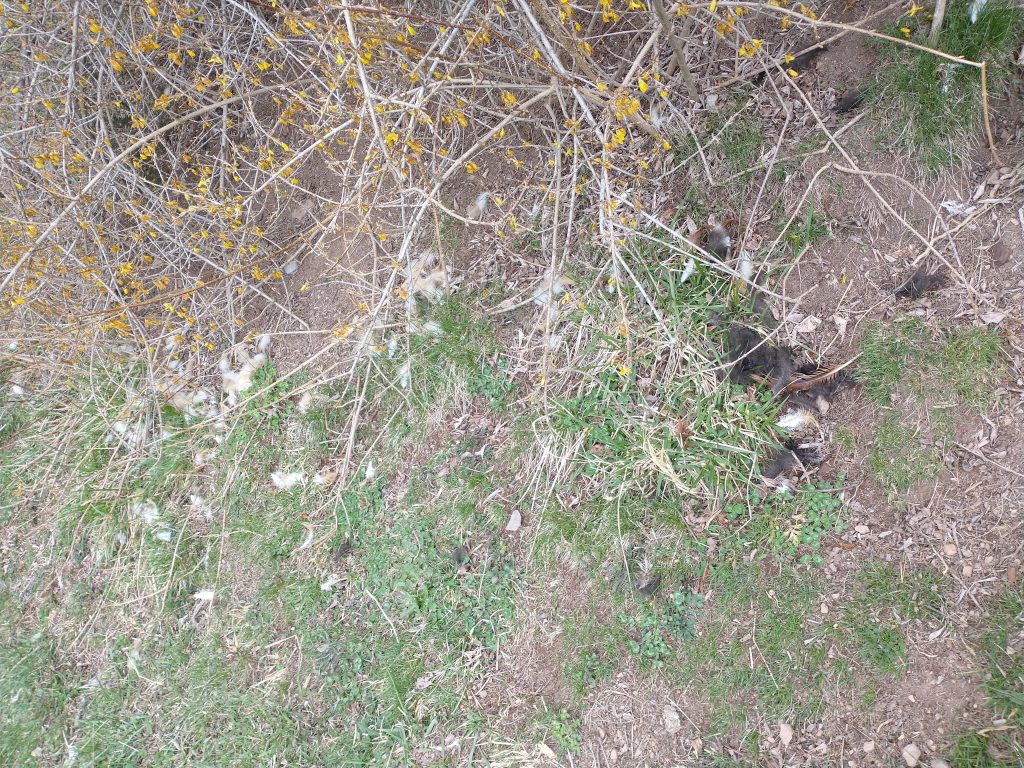The 16 year old helped bring home 6 more 2 cu ft. bags of raised bed soil. It seems kind of silly on a farm, but my beds are raised for my comfort and I moved all the soil I could into to them a few years ago and some still needed supplementation. He then helped me spread it and dig the rest of the compost pile into the various beds. We are ready for warm weather for outdoor seed starting. In the past couple of days, the rosemary that overwintered indoors was potted out on the back deck, the lettuce seedlings moved to a larger pot, also on the back deck. The tomato and tomatillo seedings were moved from the starter cells to 3 inch coir pots with nice seed starter soil and they seem happy. The peppers are still too small to move into larger pots and are taking their time even growing the first set of secondary leaves.
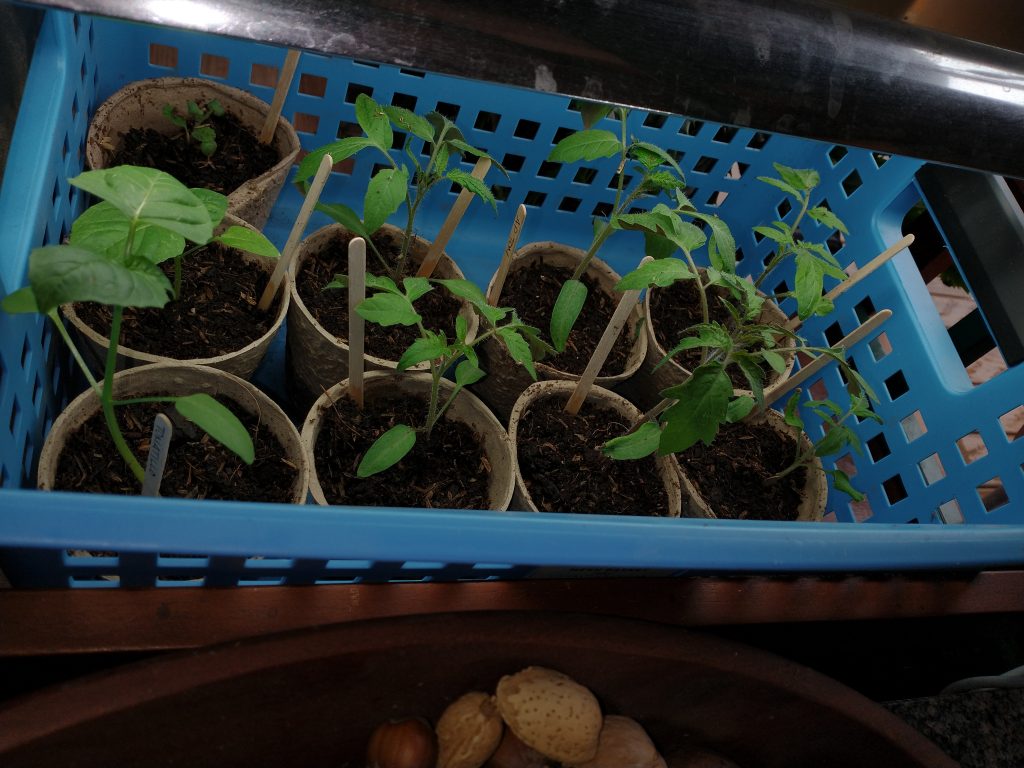
Still under lights indoors but thriving.
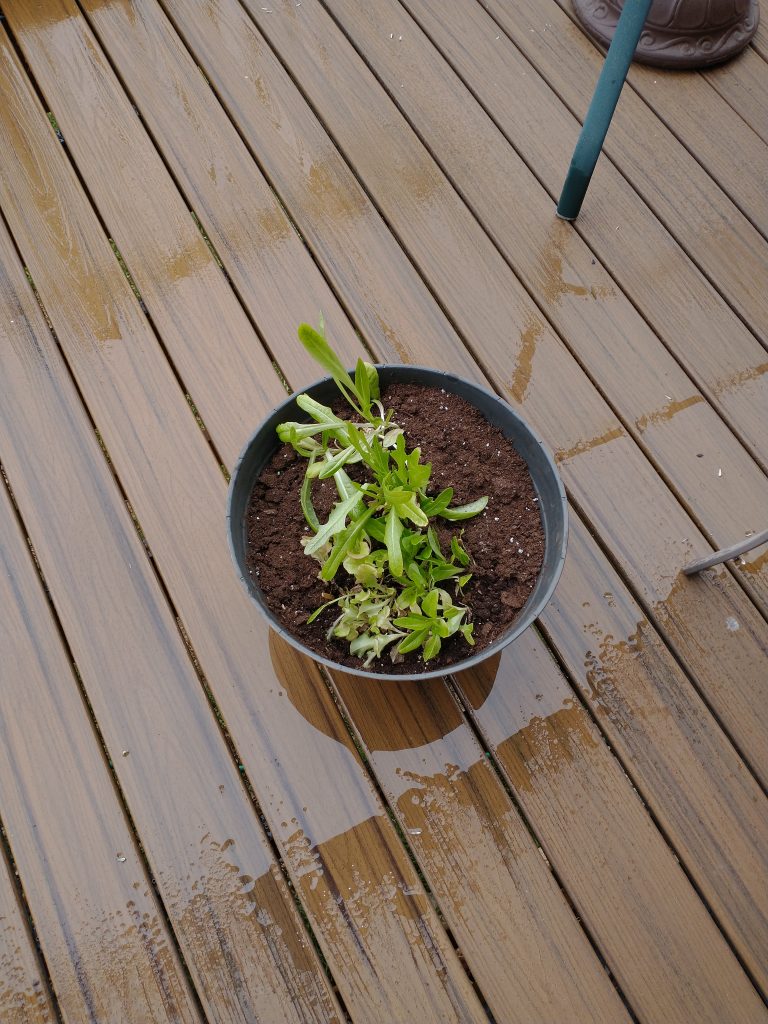

No freezing nights are eminent, so they should be okay. If a freeze is predicted, I will cover or move them indoors for the night. There are a lot of rain days in the next 10 day forecast. That should help the herb seed and newly planted garden seeds get a good start. Since peas and radishes are quick germinators, sprouts should be up by this time next week. I am looking forward to the garden, but also a bit wary as I am still having trigger finger issues and some level of shoulder discomfort. due to bursitis in an old injury site, in spite of injections last week.
In another couple of weeks, the cucumber, squash, and pumpkin seeds will be started in the starter cells. I think I am going to start some sunflower seed in 3″ pots to give them a head start. More will be direct sown when we are past last frost date in May. It is always fun getting started on the garden. By the time the weeds take over in late June it gets frustrating for a while, but then calms back to just harvest and preserving later in the summer. I just need to stay on top of the weeds and get the string trimmer repaired for the paths.
I’m still rooting for the fruit trees that may have been caught by a long warm spell and then a couple nights of hard freeze. Maybe we will get fruit, maybe not. Time will tell.

